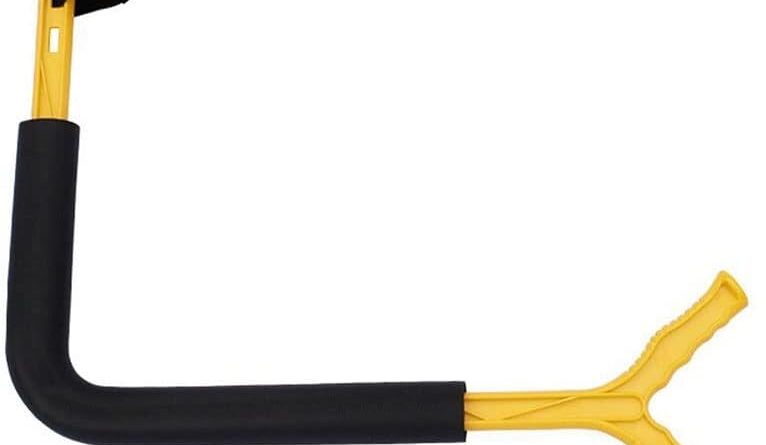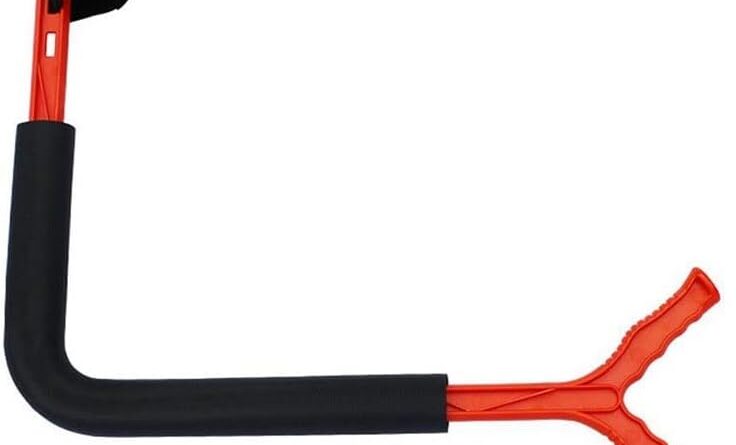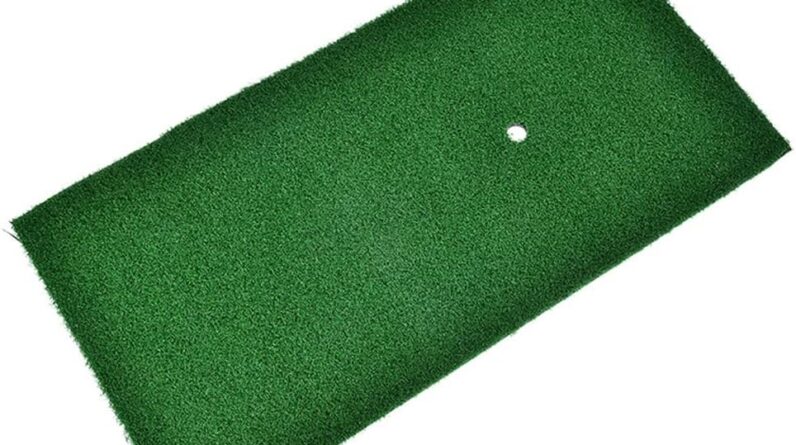Understanding spin rate is crucial when it comes to choosing the right club for your game. Whether you’re a seasoned golfer or just starting out, knowing how the spin rate affects the trajectory and distance of your shots can significantly impact your outcome on the course. A higher spin rate can provide more control and accuracy, while a lower spin rate may result in greater distance. By gaining a deeper understanding of spin rate, you’ll be able to make more informed decisions when it comes to selecting the perfect club for each shot. So, let’s delve into the significance of spin rate and equip you with the knowledge to enhance your golfing performance.

Understanding Spin Rate
Definition of Spin Rate
Spin rate refers to the rate at which a golf ball rotates in the air after being struck by a club. It is measured in revolutions per minute (rpm) and plays a crucial role in determining the ball’s trajectory, distance, and overall performance. Understanding spin rate is essential for golfers looking to optimize their club selection and improve their game.
Factors Affecting Spin Rate
Several factors can influence the spin rate of a golf ball. These factors include the type and design of the club, the golfer’s swing speed, the angle of attack, ball quality, and the playing conditions.
The type and design of the club can significantly impact the spin rate. Different clubs, such as drivers or wedges, are designed with varying lofts and center of gravity positions, resulting in different spin rates. For example, a wedge with a higher loft is likely to generate more spin compared to a driver with a lower loft.
Swing speed also plays a crucial role in spin rate. Generally, higher swing speeds generate more spin, while lower swing speeds produce less spin. Golfers need to match their club selection with their swing speed to optimize spin and achieve the desired ball flight.
The angle of attack, which refers to how the club approaches the ball, can affect spin rate. A steeper angle of attack tends to create more spin, while a shallower angle of attack produces less spin. Golfers need to consider their angle of attack and adjust their club selection accordingly to achieve the desired spin rate.
The quality of the golf ball is another factor that can affect spin rate. High-quality balls with softer covers tend to generate more spin, while harder golf balls may produce less spin. It is important for golfers to choose a ball that suits their game and desired spin characteristics.
Lastly, playing conditions such as wind, temperature, and course conditions can impact spin rate. Wind can either enhance or reduce spin, depending on its direction and speed. Different course conditions, such as grass type and moisture levels, can also affect the spin rate. Golfers must take these factors into account when selecting a club to optimize their spin rate and control their shots.
Measurement of Spin Rate
To accurately measure spin rate, various tools and technologies are available to golfers. These include launch monitors, data tracking devices, advanced golf simulators, impact tape, and professional club fitting sessions.
Launch monitors are one of the most popular tools used to measure spin rate. These devices use radar technology or high-speed cameras to capture data on club head speed, launch angle, and spin rate. Launch monitors provide golfers with comprehensive feedback on their shots, allowing them to make informed decisions about club selection based on spin rate data.
Data tracking devices, such as wearable sensors or golf swing analyzers, can also provide information on spin rate. These devices capture data during the swing and provide insights on various parameters, including spin rate.
Advanced golf simulators equipped with high-speed cameras can accurately measure spin rate by tracking the ball’s trajectory and rotation in a virtual environment. These simulators provide golfers with realistic feedback on their shots and spin rate performance.
Another simple and cost-effective way to measure spin rate is through the use of impact tape. By applying impact tape to the clubface, golfers can analyze the ball’s contact pattern and determine the spin rate based on the resulting markings.
Lastly, professional club fitting sessions offer golfers the opportunity to work with experts who use specialized equipment to assess spin rate. By analyzing the golfer’s swing dynamics and club performance, club fitters can recommend the ideal club specifications to optimize spin rate and improve overall performance.
Types of Spin
There are three main types of spin that golfers need to understand: backspin, sidespin, and topspin.
Backspin refers to the spin that makes the ball rotate backward as it travels through the air. Backspin helps the ball stay in the air longer, reduces the impact of gravity, and allows for more control and accuracy. It is particularly important when playing approach shots, as backspin can help the ball stop quickly on the green.
Sidespin, as the name suggests, refers to the spin that causes the ball to curve to the left or right. Sidespin can be intentional, such as when intentionally shaping shots around obstacles, or unintentional, such as when a golfer has an inconsistent swing path. Understanding sidespin can help golfers correct their swing and execution to achieve desired shot shapes.
Topspin is the opposite of backspin, where the ball rotates forward as it travels through the air. Topspin can help keep the ball low and provide additional roll upon landing. Golfers often use topspin to maximize distance off the tee or when hitting low escape shots from trouble.
Each type of spin has a unique effect on the ball’s flight and distance. By understanding these different spins, golfers can make more informed club selections and adjust their shots accordingly to achieve the desired outcome.
Importance of Spin Rate for Club Selection
Spin rate plays a crucial role in club selection and can significantly impact a golfer’s performance. Here are some reasons why understanding spin rate is essential:
-
Controlling Ball Flight: Spin rate directly affects the trajectory of the ball. By selecting a club with the appropriate spin rate, golfers can control the height and shape of their shots. High spin rates with sufficient backspin can help the ball land softly on greens, while lower spin rates can produce a flatter trajectory for increased distance.
-
Maximizing Distance: Optimizing spin rate is crucial for maximizing distance. A well-fit club with the ideal spin rate can help golfers achieve the optimal combination of launch angle, spin, and ball speed, resulting in maximum carry and roll. Incorrect spin rate can lead to a loss of distance or increased spin that hampers roll-out.
-
Hitting Approach Shots: Approach shots require a balance between distance control and stopping power. By understanding spin rate, golfers can select the appropriate club that produces the desired spin characteristics to hold the green. Too much spin can cause the ball to spin back, while too little spin may result in the ball releasing too far.
-
Affecting Accuracy: Spin rate can greatly impact shot accuracy. The right spin rate can help reduce side spin and minimize shot dispersion. By selecting a club that promotes the desired spin rate, golfers can increase their accuracy and hit more consistent shots.
-
Playing Different Conditions: Understanding spin rate allows golfers to adapt to various playing conditions. Factors such as wind and course conditions can influence spin rate. By selecting clubs with the appropriate spin rate for the given conditions, golfers can navigate challenging situations and maintain control over their shots.
Club Type and Design
Understanding Loft and Center of Gravity
Loft refers to the angle of the clubface relative to the ground. Clubs with a higher loft (e.g., wedges) generate more backspin due to the increased loft angle. On the other hand, clubs with lower lofts (e.g., drivers) produce less backspin and promote a flatter trajectory for increased distance. Understanding the loft of different clubs is crucial in selecting the right club for the desired spin rate.
The center of gravity (CG) is the point within the clubhead where the majority of the club’s mass is concentrated. CG position influences the club’s forgiveness, launch angle, and spin rate. Clubs with a lower CG often generate higher launch angles and increased spin rates, while clubs with a higher CG typically produce lower spin rates. Golfers should consider the CG position in club design when choosing their clubs to optimize spin rate.
Choosing the Right Club
Understanding spin rate helps golfers select the right club for each shot. For example, when approaching the green, golfers may opt for a wedge with a loft that generates sufficient backspin to stop the ball close to the hole. On the other hand, when teeing off, golfers may prefer a driver with a lower loft to optimize distance by reducing spin.
Golfers should also consider the variety of clubs available, including fairway woods, hybrids, and irons, each with their unique loft and spin characteristics. By understanding how different club types and designs influence spin rate, golfers can make informed decisions and select the club that best suits their game and shot requirements.
Adjustability and Spin Rate
Some modern clubs offer adjustability features, allowing golfers to fine-tune spin rate. These features often include loft adjustability, which allows golfers to increase or decrease the loft angle to optimize spin. Adjustability can be especially beneficial for golfers who prefer to carry fewer clubs and rely on adjustability to optimize performance across different shot scenarios.
Swing Speed
Impact of Swing Speed on Spin Rate
Swing speed is a crucial factor that affects spin rate. Generally, higher swing speeds generate more spin, while lower swing speeds produce less spin. This is because higher swing speeds generate more ball compression, resulting in increased spin due to increased backspin.
Matching Clubs to Swing Speed
It is important for golfers to match their club selection to their swing speed to optimize spin rate. Golfers with slower swing speeds may benefit from clubs that generate more spin to help increase carry distance and control. On the other hand, golfers with faster swing speeds may prefer clubs that produce lower spin to maximize distance and reduce the chances of excessive backspin.
Balancing Distance and Control
Understanding the relationship between swing speed and spin rate allows golfers to strike a balance between distance and control. Golfers with slower swing speeds may prioritize control by selecting clubs that generate higher spin rates. Conversely, golfers with faster swing speeds may focus on maximizing distance by choosing clubs that produce lower spin rates. By finding the right balance, golfers can optimize their performance and achieve the desired outcome on the course.
Angle of Attack
Effect of Angle of Attack on Spin Rate
The angle of attack, also known as the swing plane, refers to how the clubhead approaches the ball. It can significantly influence spin rate. A steeper angle of attack tends to generate more spin, while a shallower angle of attack produces less spin.
Optimizing Spin Rate for Different Shots
Understanding the effect of angle of attack on spin rate allows golfers to optimize their shot selection. For example, when hitting approach shots, golfers may choose to take a shallower angle of attack to reduce spin and achieve a flatter trajectory for increased distance. Conversely, when executing shots around the greens, golfers may adopt a steeper angle of attack to increase spin and control the ball’s landing and rolling characteristics.
Controlling Trajectory and Spin
By adjusting the angle of attack, golfers can control both the trajectory and spin rate of their shots. Golfers with the ability to manipulate their angle of attack can create the desired spin rate to hold greens, avoid obstacles, or shape shots around hazards. Understanding how angle of attack affects spin rate empowers golfers to make strategic decisions and execute shots effectively.
Playing Conditions
Effect of Wind on Spin Rate
Playing in windy conditions can have a significant impact on spin rate. Strong headwinds can reduce spin and distance by counteracting the natural backspin on the ball. Conversely, tailwinds can enhance spin and distance by adding to the existing backspin. Crosswinds can also affect spin rate, causing the ball to curve in unexpected ways.
Considering Course Conditions
Course conditions, such as greens firmness and speed, can also influence spin rate. Firm greens tend to reduce backspin and require more roll-out upon landing. Soft greens, on the other hand, allow more backspin and afford golfers the ability to stop the ball quickly.
Adapting Spin Rate to Grass
Different grass types can affect spin rate. For example, hitting shots from the fairway versus hitting shots from the rough can yield different spin rates. The thicker grass in the rough tends to grab the clubface, resulting in increased spin. Golfers need to consider the grass conditions and adapt their club selection to optimize spin rate and achieve the desired shot outcome.
Impact of Weather
Weather conditions, such as temperature and humidity, can impact spin rate. Colder temperatures tend to reduce spin, while warmer temperatures can increase spin. High humidity can also affect the ball’s performance, altering the spin rate. Golfers should be mindful of these weather conditions and adjust their club selection accordingly to achieve the desired spin rate and shot outcome.
In conclusion, understanding spin rate and its various factors is essential in club selection for golfers. The spin rate directly affects the trajectory, distance, and control of the ball. By considering factors such as club type and design, swing speed, angle of attack, playing conditions, and the different types of spin, golfers can optimize their club selection to achieve the desired spin rate for each shot. This understanding allows for improved performance on the golf course, better control over shots, and the ability to adapt to varying conditions. So, whether you’re a beginner or an experienced golfer, take the time to understand and leverage the importance of spin rate in your club selection – it can make a significant difference in your game.







